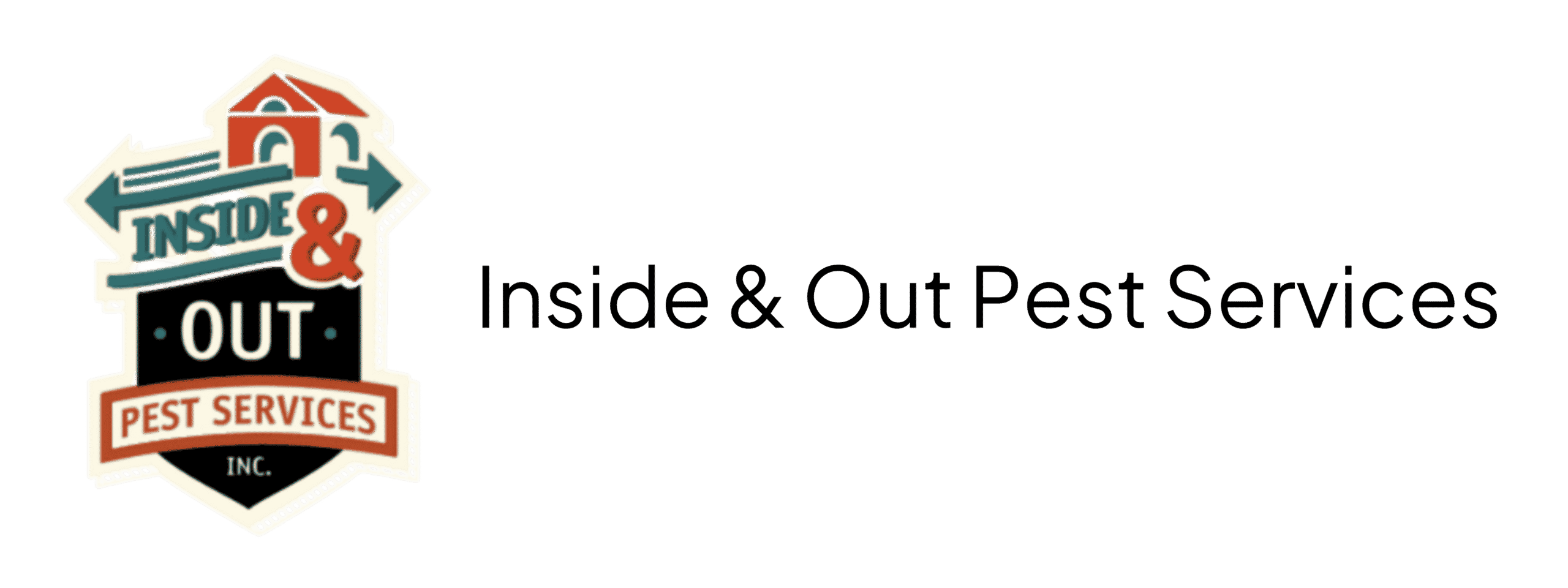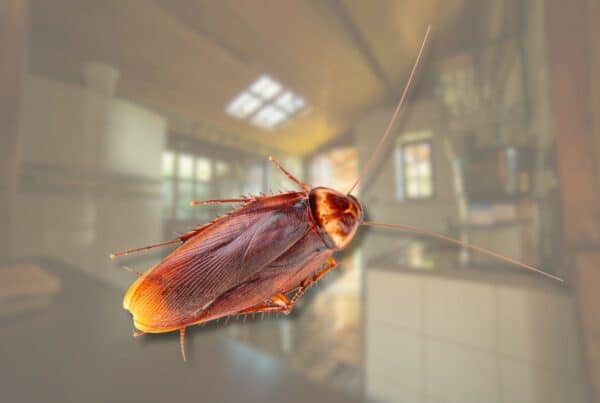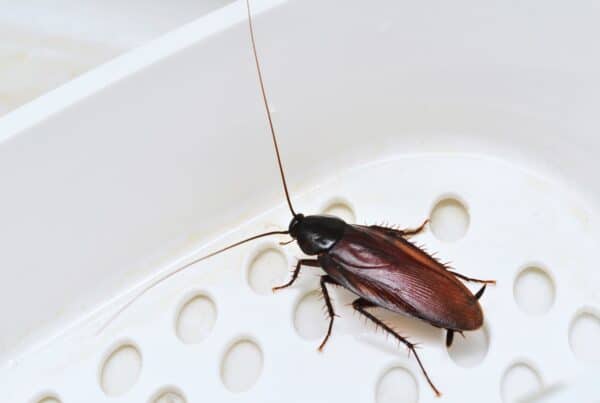Here’s everything you need to know about how to get rid of wood roaches and stop them from coming back for good.
Sometimes called palmetto bugs, wood roaches are common in warm, humid climates. Unlike German roaches that thrive indoors, wood roaches prefer the outdoors but can wander inside through small openings.
Once they do, they’re quick, persistent, and difficult to keep away without addressing what’s attracting them in the first place. At Inside & Out Pest Services, we know how frustrating it is to find roaches inside a clean home.
What Are Wood Roaches?
Wood roaches are larger, outdoor-dwelling roach species, such as Smokybrown, and Pennsylvania wood roaches.
They feed on decaying leaves, wood, and organic debris, which makes them more of a yard pest than a kitchen invader.
While these roaches don’t usually nest inside, they can still cause stress when they sneak indoors looking for shelter or light. Males are the most active and often the ones homeowners see flying toward porch lights at night.
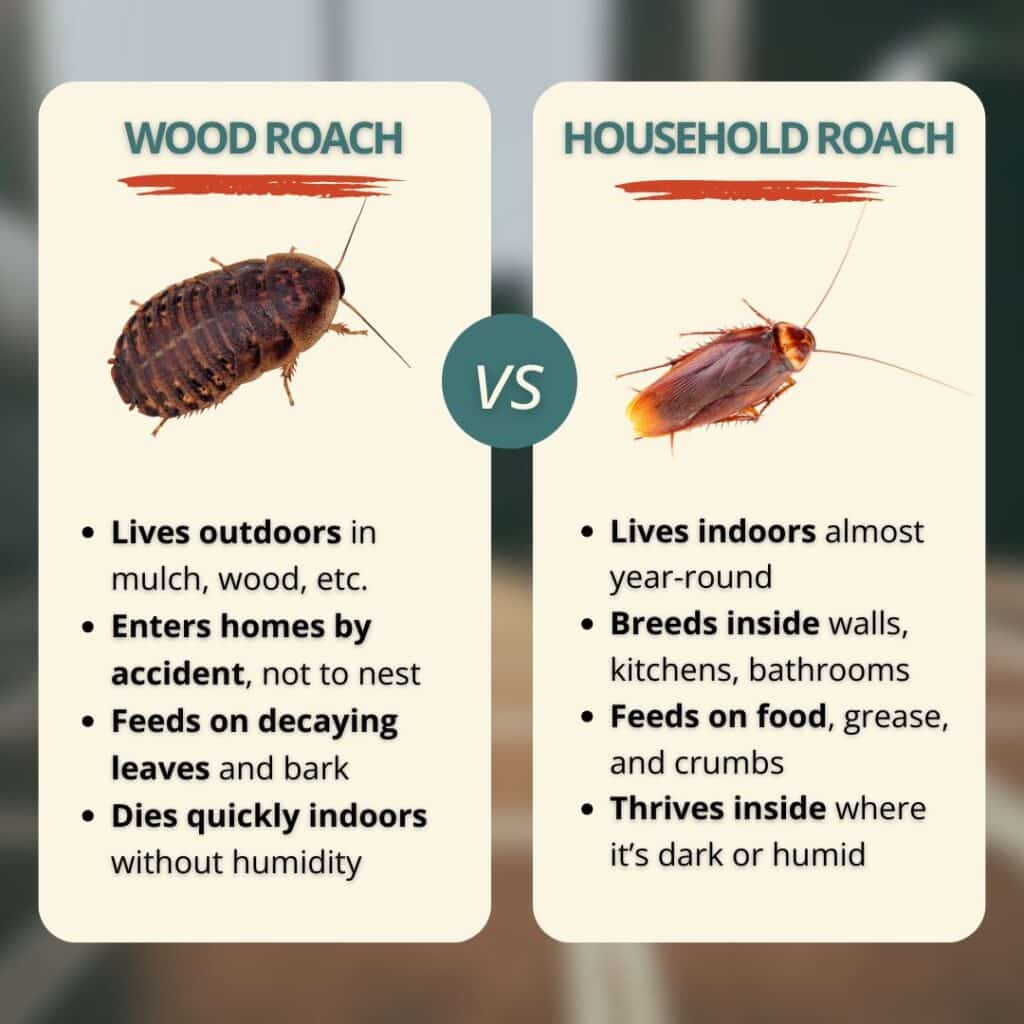
Identifying Wood Roaches
- Light to reddish-brown color with a shiny, smooth shell
- Long wings that extend past the body in males
- Fast-moving, but not aggressive
- Prefer damp areas over dry ones
Fact: Unlike household roaches, wood roaches don’t need crumbs or grease to survive. They thrive on decaying plant matter outdoors.
Why Wood Roaches Enter Homes
Wood roaches don’t want to live inside your home, but Florida’s tropical conditions make it easy for them to wander in. The most common reasons include:
- Humidity and Rain: After heavy rain, outdoor nesting spots flood. Roaches look for higher, drier ground, and sometimes that means inside.
- Light Attraction: Porch and window lights draw them in after sunset. Once they land near doors, they can slip inside easily.
- Openings and Cracks: Unsealed door frames, vents, or screens allow easy entry.
- Accessible Moisture: Leaky faucets, drains, and damp crawl spaces provide a cool environment that mimics their natural habitat.
If you’re seeing wood roaches inside every few days, there’s a good chance they’ve found reliable shelter near your home’s foundation.
Common Outdoor Hiding Spots
These roaches are masters at finding moisture and shade. In Florida’s year-round humidity, they can survive in almost any landscape.
Look for them in:
- Firewood piles stacked near the house
- Mulch beds and flower planters with damp soil
- Gutters filled with leaves
- Cracks behind siding or under roof eaves
- Outdoor storage bins or trash cans that hold moisture
- Potted plants that never fully dry out
Tip: Check shaded corners of your yard at dusk with a flashlight. If roaches scatter, you’ve found one of their favorite resting areas.
Why Wood Roaches Are Hard to Get Rid Of
Even if you eliminate one or two, more will appear if the outdoor environment still attracts them. Their population thrives year-round in Florida because:
- Females lay eggs in protective casings that survive harsh weather.
- Males can travel long distances searching for females or food.
- Rain and humidity replenish their food sources continuously.
To truly prevent wood roaches, homeowners must combine habitat reduction, exclusion, and targeted pest control. This approach eliminates both the attraction and the access.
How to Get Rid of Wood Roaches and Keep Them Away
Now that you know what draws them in, it’s time to take action. Below are the most effective ways to prevent and deter wood roaches around your home.
1. Control Moisture Indoors and Out
Wood roaches need humidity to survive. Start with these steps:
- Fix any leaky pipes or outdoor spigots.
- Run a dehumidifier in damp basements or crawl spaces.
- Clean gutters and downspouts twice a year to prevent buildup.
- Check irrigation systems for leaks or overspray near the foundation.
Keeping your property dry is one of the most powerful long-term deterrents.
2. Store Firewood and Yard Debris Away from the Home
Firewood and mulch piles are ideal wood roach shelters (termites, too). Stack firewood at least 20 feet from the house and raise it off the ground with pallets or bricks.
Use inorganic ground cover like gravel near exterior walls instead of thick wood mulch. Trim overgrown shrubs that create dark, damp spots where roaches rest.
Tip: Rake and bag fallen leaves each week during rainy months. Decaying leaves provide both food and shelter for roaches.
3. Seal Cracks and Openings
Inspect your home from top to bottom for gaps where light or air passes through. Pay attention to:
- Door sweeps and weatherstripping
- Utility entry points and vents
- Torn window screens or gaps under siding
Seal cracks with high-quality silicone caulk or steel mesh. Even small openings near outdoor faucets or hose bibs can serve as gateways for roaches.
4. Adjust Outdoor Lighting
Like moths, wood roaches navigate using light. Standard white bulbs emit ultraviolet wavelengths that attract them from long distances.
Replace porch and patio lights with yellow LED bulbs or install motion-activated lighting. Keep exterior lights off when not needed, especially during humid evenings.
5. Maintain a Clean Perimeter
Wood roaches often cling to vegetation close to your foundation. Maintain at least a 12-inch buffer zone between landscaping and your exterior walls.
Remove yard clutter, such as tarps, garden tools, and unused flowerpots that hold moisture. Sweep porches regularly and empty outdoor trash bins before they overflow.
6. Inspect What You Bring Inside
Wood roaches sometimes hitch a ride indoors. Before bringing in firewood, patio cushions, or storage boxes, give them a quick visual inspection.
If you store seasonal items outdoors, shake them out before bringing them into the garage or attic.
Natural Repellents That Can Help
While natural solutions alone won’t eliminate wood roaches, they can help reduce activity between treatments.
Popular natural deterrents include…
- Diatomaceous Earth (DE): A powder that dehydrates insects when they crawl over it. Safe for pets and children when used correctly.
- Boric Acid: Lightly applied under appliances or around entry points. Avoid overuse, as it works best in small amounts.
- Essential Oils: Cedarwood, peppermint, and lemongrass oils may repel roaches when sprayed around doors and windows.
Note: Use these as supplements, not replacements, for long-term pest control.
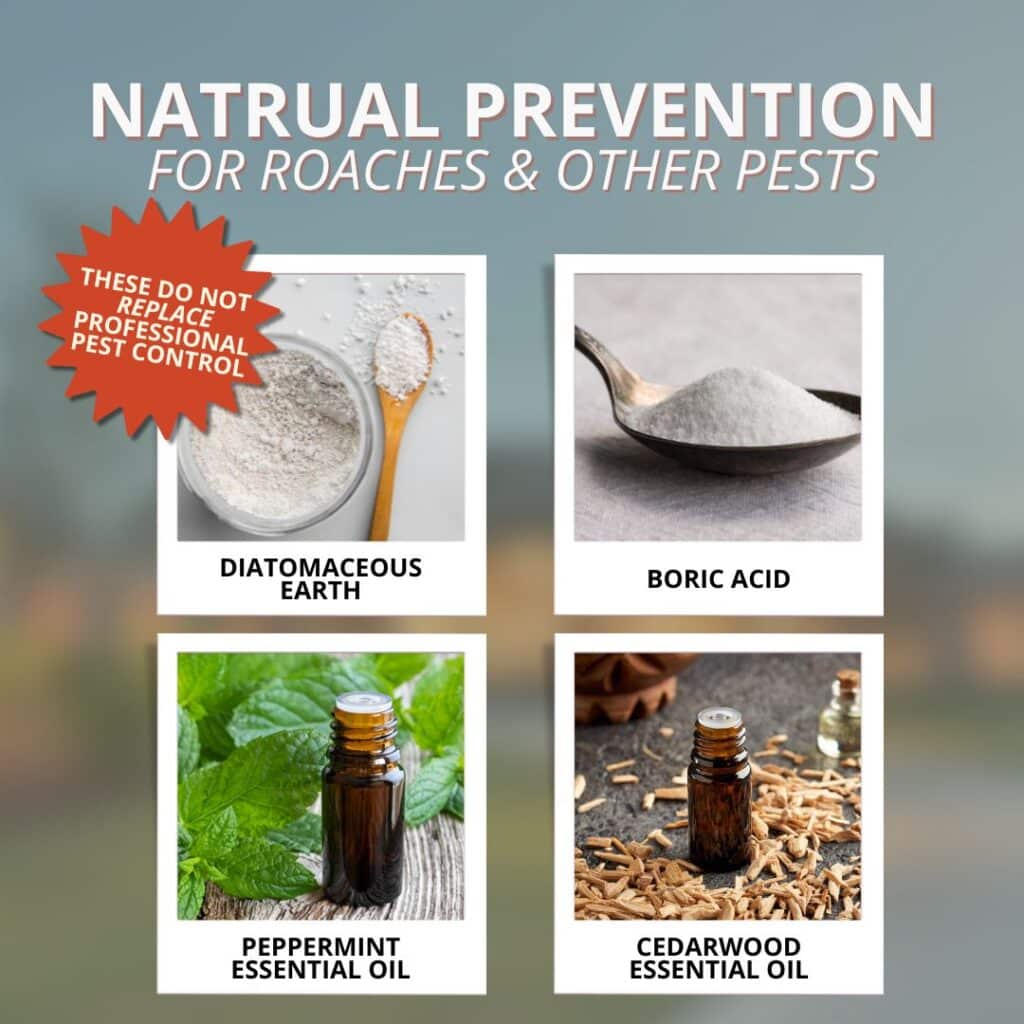
Indoor vs. Outdoor Prevention Strategies
| Area | Preventive Focus | Action Steps |
| Indoor | Moisture control | Fix leaks, use dehumidifiers, and maintain airflow |
| Indoor | Entry points | Seal doors, vents, and gaps around pipes |
| Outdoor | Habitat reduction | Store firewood away, trim bushes, clean gutters |
| Outdoor | Light management | Replace bright lights with yellow LEDs |
When to Call a Professional
If you’ve tried these steps to get rid of them and still see wood roaches regularly, professional help is the most effective next step.
At Inside & Out, we use a targeted treatment approach built for Florida’s climate. Our process includes:
- A full property inspection to identify attractants and entry points.
- Safe, precise treatments around perimeters, foundations, and crawl spaces.
- Follow-up visits for long-term prevention and monitoring.
Our technicians know that controlling moisture, sealing structures, and applying targeted solutions keeps homes free of wood roaches and other pests like ants and silverfish.
Reminder: Quarterly pest treatments maintain an invisible barrier that keeps seasonal pests under control without needing harsh, constant sprays.
Wood Roaches, Your Home, and DIY Don’t Mix
Many store-bought sprays only kill the roaches you can see. They don’t reach outdoor harborage areas or block re-entry routes. Because wood roaches spend most of their time outside, perimeter protection is key.
Professional pest services use long-lasting treatments that bond to surfaces and continue working even after rain, something typical sprays can’t achieve.
Although wood roaches aren’t known for spreading disease, they can still contaminate surfaces and trigger mild allergies. Their droppings and shed skins can aggravate asthma in sensitive individuals.
More often, the issue is psychological. Homeowners feel anxious about seeing large roaches inside even when the infestation risk is low. Preventive pest control restores comfort and confidence in your living space.
Related Questions
Do wood roaches infest homes like German cockroaches?
No. Wood roaches don’t breed indoors and usually die within days if trapped inside.
Why do wood roaches fly toward lights?
They use light for navigation. Bright porch lights disorient them, which is why they seem to fly at people.
Can wood roaches bite or cause harm?
No. They don’t bite humans or pets, but they can carry bacteria from soil or decaying material.
Will cleaning alone get rid of them?
Cleaning helps reduce attractants, but exclusion and moisture control are necessary for real prevention.
When is roach season in Florida?
Activity peaks from April through October, when humidity is highest, but warm winters allow year-round sightings.
Conclusion
Wood roaches are an outdoor species, but the right combination of light, moisture, and access can bring them indoors. By improving drainage, trimming landscaping, sealing gaps, and managing lighting, you can make your home far less inviting.
If wood roaches continue showing up despite prevention efforts, Inside & Out Pest Services can help get rid of them. Our pest control experts specialize in long-term prevention and safe, effective treatments tailored to Jacksonville’s climate.
